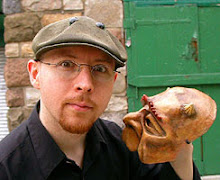My friend Robin's sense of organizing space is the best I've ever seen. The amount of supplies, tools, final products and resource material that she can fit in a single space is incredible.
Knowing I could improve in my own "studio with a bed in the middle", I started making some tweaks in terms of moving furniture around, decluttering and getting rid of things I no longer needed.
No, REALLY, I had to be stern with myself, and a lot of "my PRECIOUS" and "I'll need that someday" had to go.
Thankfully, the parting is virtually guilt-free, as a lot of my neighbors are recyclers.
Whatever I put out on the curb that might, even remotely, have some kind of utility left in it, gets appropriated within two or three hours, usually. Weirdest quick disappearances so far: a pair of DESTROYED studio sneakers, and a very uncomfortable mattress.
But I digress. Again. Back on track:
This week, in between steps in two different contracts, I spent a lot of time and effort on that studio makeover. I LOVE it!
My biggest investment and improvement came as a purchase of a used industrial shelving system (200$).
That beautiful behemoth thing allows me to store most of my supplies in one room, but it does take HALF the room. Seeing how wonderfully deep and wide that middle shelf was, I decided to use it as a work table. finally, a space big enough to pattern and cut my fabrics, without having to put a board over my bed. That meant that more than a third of the shelving's storing power would be immediately eliminated! That wouldn't do! I figured I could find some shelves I could install on the back wall, between the bottom shelf and the top one. Easier said then done!
But the idea of using milk crates has been floating in my head since my Roroart visit, and today I implemented it. WOW! The table space that 7 maskmaking bases used to wastefully occupy, now provides residence to those same bases, and so many more items, including items that were stored elsewhere. I have better storage, and MORE SPACE!
I love the milk crates so much I'm getting more this week. I want to build an l-shaped mobile tool station, to hold my tool bucket, a tape dispenser, with a wooden table top to hold my crock pot (for warming my oil-based clay). The crates are held together with big tie wraps (zip ties), which means they can easily be re purposed in the future. For sturdier assembly, I'd use nuts and bolts with washers.
For those who have not had the pleasure of interacting with milk crates, they are quite common in North America. They are sturdy plastic square crates that are used for delivery of milk and other items to grocery and convenience stores. Countless artists, handypeople, and cyclists have adopted them for their own uses. You can get them for free sometimes, but in my area, I have to buy them from the store, as they have a consignation price on them. They have to pay the supplier for each missing crate, so I buy them at that price, which is 4$. 4$ for a magical item that has the convenience of a thousand uses!
Here's my first milk crate shelving, which is only four crates and an old wooden shelf:
I'll update this article with more tips and pictures of what I've done in my studio soon.





